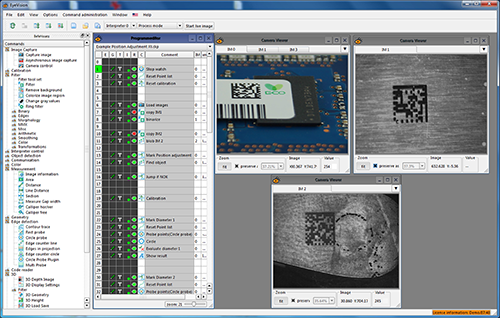DALSA Genie camera and many more are now supported by EyeVision
The Genie GigE series and others by DALSA are now supported in EyeVision software.
In addition, EyeVision offers a new feature, where with only one instance several cameras or sensors can be operated at the same time. Computers with more than one core can operate more than one camera per instance. The cameras can run different inspection programs but only use one EyeVision license. In short: One EyeVision license, several instances and several cameras per instance. And it does not matter if the cameras have different interfaces (GigE, USB, RS232, etc.), are 2D or 3D cameras, or have color or grey scale sensors.
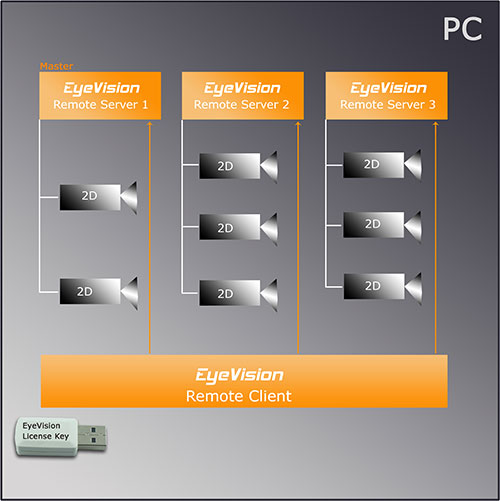 With this function the user might consider using EyeMultiView. It can display up to 16 camera views and evaluation images on one screen. With that many instances and cameras running at the same time, the display functionality of EyeMultiView makes monitoring easier for the user.
With this function the user might consider using EyeMultiView. It can display up to 16 camera views and evaluation images on one screen. With that many instances and cameras running at the same time, the display functionality of EyeMultiView makes monitoring easier for the user.
For example, one camera can run pattern matching for error detection on a label and on the second camera the inspection for closed package. On the third camera the color inspection and the fourth one can read the bar code. 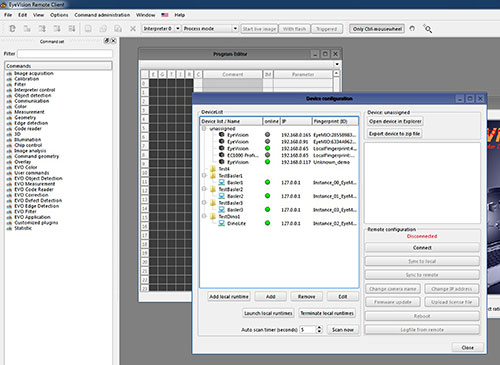 With the Multi-Instance you only need one license for all this. All is now possible with DALSA cameras and as always, the inspection programs can be created with the drag-and-drop function and in the graphical user interface where the user can switch between the different projects and programs.
With the Multi-Instance you only need one license for all this. All is now possible with DALSA cameras and as always, the inspection programs can be created with the drag-and-drop function and in the graphical user interface where the user can switch between the different projects and programs.

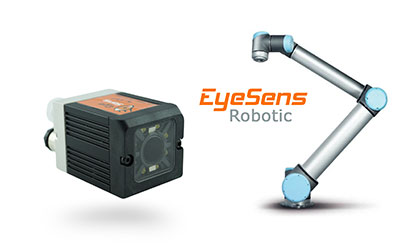 EVT has now added the new EyeSens Robotic to the Smart Vision Sensor System EyeSens.
EVT has now added the new EyeSens Robotic to the Smart Vision Sensor System EyeSens.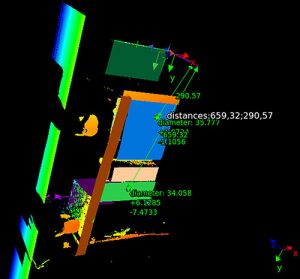 The measurement of holes and the determination of their position is a special challenge. EyeVision 3D software offers precise 3D measurements with more than 40 specialized commands.
The measurement of holes and the determination of their position is a special challenge. EyeVision 3D software offers precise 3D measurements with more than 40 specialized commands.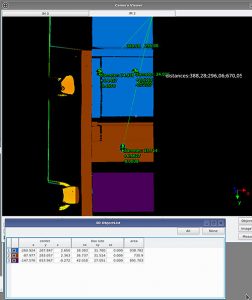 In the case of sheet metal components, it is possible to capture the whole component geometry in a high-resolution point cloud by using visual 3D metrology. A precise metrology command set allows correctly defining various measurements in a point cloud and their coordinates in relation to other results with only a few commands.
In the case of sheet metal components, it is possible to capture the whole component geometry in a high-resolution point cloud by using visual 3D metrology. A precise metrology command set allows correctly defining various measurements in a point cloud and their coordinates in relation to other results with only a few commands.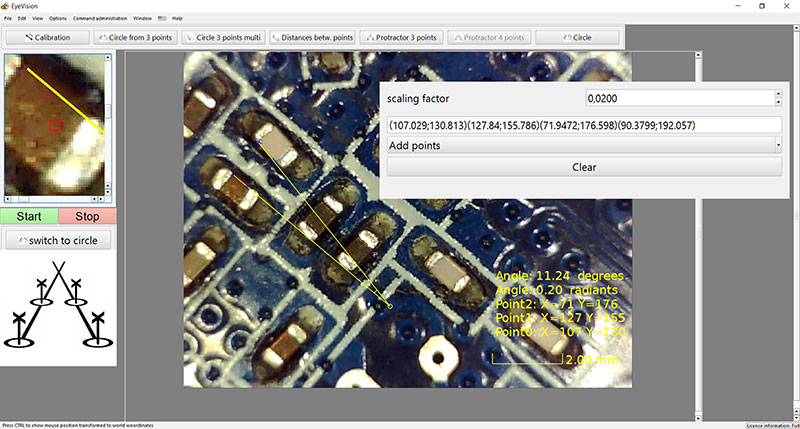
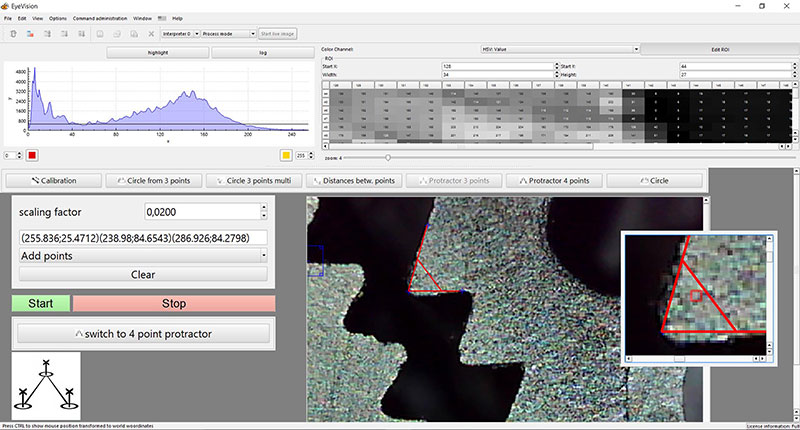
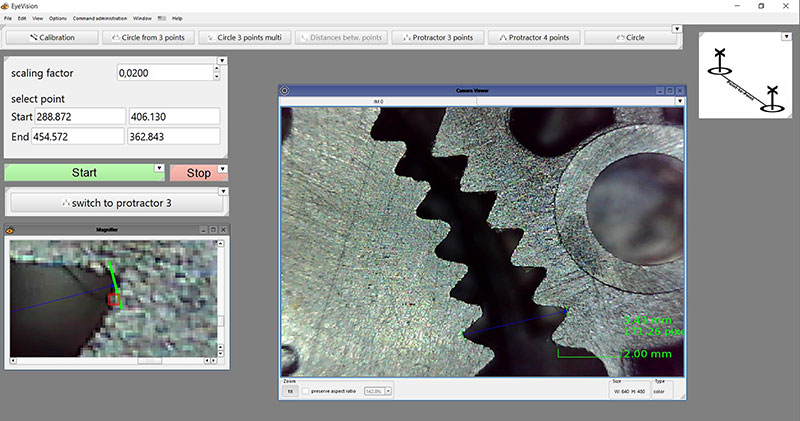
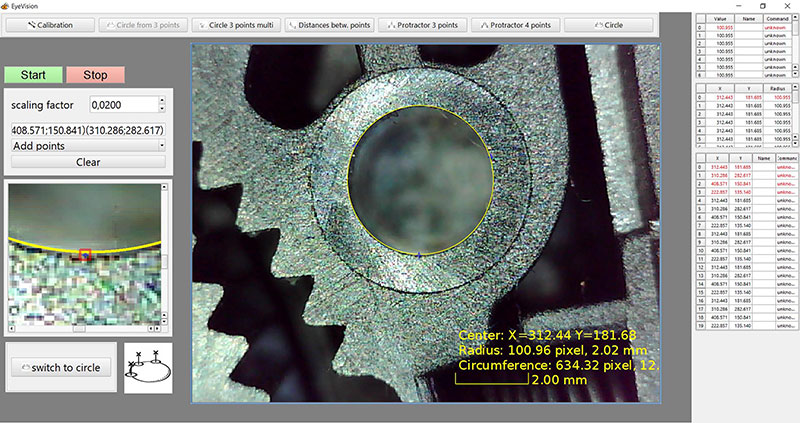
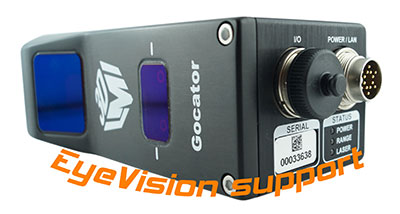 EyeVision software provides the integrated “brain” of the 3D sensor. EyeVision allows the sensor not only to capture an image but also to use the complete 3D command set of the software to measure, compare and read the 3D point cloud or 2D gray-scale image.
EyeVision software provides the integrated “brain” of the 3D sensor. EyeVision allows the sensor not only to capture an image but also to use the complete 3D command set of the software to measure, compare and read the 3D point cloud or 2D gray-scale image.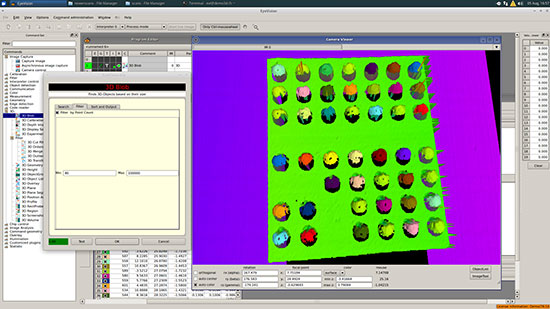


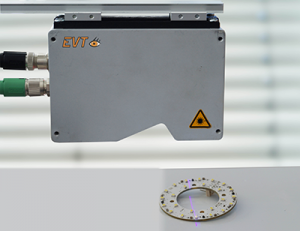 Today’s noncontact 3D scanners include one of two laser types: blue laser or red laser. Most 3D scanners, including EyeScan 3D scanners from EVT, user red laser technology. The new EyeScan AT 3D Blue, however, utilizes optically superior blue laser technology.
Today’s noncontact 3D scanners include one of two laser types: blue laser or red laser. Most 3D scanners, including EyeScan 3D scanners from EVT, user red laser technology. The new EyeScan AT 3D Blue, however, utilizes optically superior blue laser technology.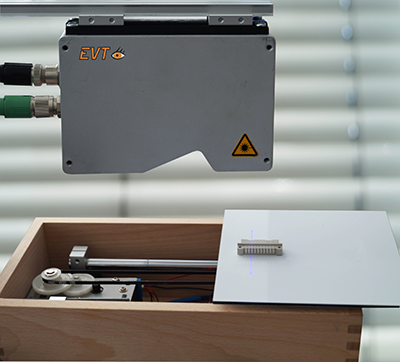
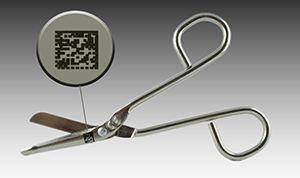 Medical products undergo a number of quality and safety inspections and have explicit markings and identification. EyeVision image processing software is often used to inspect markings on medical products. A camera inspection system consisting of an EyeCheck smart camera, which includes EyeVision software, can be integrated permanently into the laser marker head, ensuring an accompanying image capture for verification and validation of the quality.
Medical products undergo a number of quality and safety inspections and have explicit markings and identification. EyeVision image processing software is often used to inspect markings on medical products. A camera inspection system consisting of an EyeCheck smart camera, which includes EyeVision software, can be integrated permanently into the laser marker head, ensuring an accompanying image capture for verification and validation of the quality.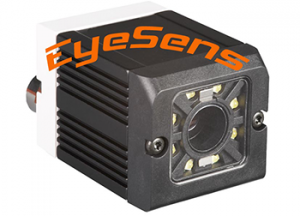 The EyeSens DMC Code Reader from EVT is a compact vision sensor with integrated lens and illumination. There are three different resolutions: 736 x 480, 1024 x 768 and 1280 x 1024 pixels. The EyeSens has a 1/3“ CMOS sensor and interfaces with Ethernet, RS232 and RS422. The lens can be in 6, 12 or 25 mm.
The EyeSens DMC Code Reader from EVT is a compact vision sensor with integrated lens and illumination. There are three different resolutions: 736 x 480, 1024 x 768 and 1280 x 1024 pixels. The EyeSens has a 1/3“ CMOS sensor and interfaces with Ethernet, RS232 and RS422. The lens can be in 6, 12 or 25 mm.